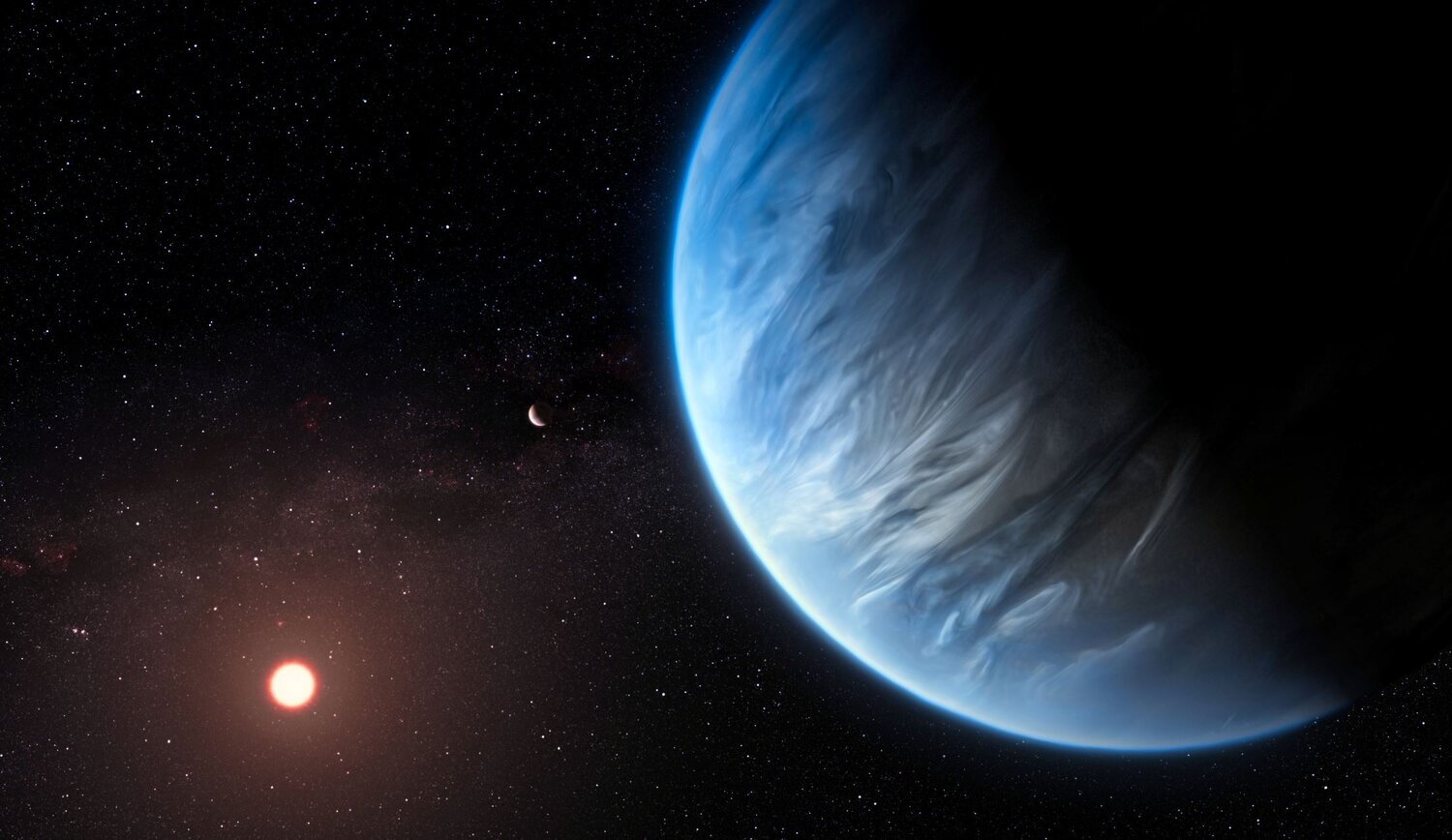Comments and suggestions are welcome! Don't hesitate and leave a comment on our comment section down below the article!
An artist’s impression of the unique exoplanet - Image Credits: ESA/Hubble, M. Kornmesser - HDR tune by Universal-Sci
Astronomers discovered water vapor in the atmosphere of super-earth K2-18b, an exoplanet that is orbiting its host star in the habitable zone. According to scientists, k2-18b might potentially be the most habitable out of all exoplanets that have been discovered up until this day. The researchers published their findings in the science journal Nature Astronomy
Dr Angelos Tsiaras, the first author of the study, stated that finding water on a possibly habitable exoplanet is incredibly exciting. Although it is significantly more massive than the Earth, it brings scientists closer to answering one of the fundamental questions that has captivated humankind for a long time: 'Is the Earth unique'?
The research team developed an algorithm to analyze starlight shining through the atmosphere of k2-18b. Specific wavelengths are blocked by the atmosphere, revealing its composition. In the case of k2-18b water vapor was found in addition to helium and hydrogen.
It is not yet possible to determine what the atmosphere consists of precisely. Scientists believe that other substances like methane may be present as well. The existence of methane could be a further clue regarding potential life. However, as of now, these molecules remain undetectable. Further research is needed.
Future space telescopes like the up-and-coming Hubble succesor, the James Webb Space Telescope will be able to pick up much more detail about the atmosphere. According to Professor Giovanna Tinetti, the discovery makes k2-18b one of the most appealing targets for future study.
The future James Webb Space Telescope will be able to pick up way more details from exoplanet atmospheres than current space telescopes. - Image Credit: NASA/Chris Gunn - HDR tune by Universal-Sci
K2-18b orbits around a cool dwarf star called K2-18 110 lightyears from Earth and can be found in the constellation Leo. Although K2-18b has some similarities to Earth, they differ quite a bit. As stated by Dr. Angelos Tsiaras, the exoplanet is more massive than our home planet. It has eight times the mass of the Earth to be precise. Moreover, it is exposed to higher radiation because it circles a red dwarf star. Red dwarf stars are usually more volatile than sun-like stars.
Dr. Ingo Waldman, Co-author of the study, stated that many new super-Earths are expected to be found in upcoming decades. Not solely because of the fact that super-Earths are the most common type of planet in our galaxy but also because red dwarf stars are the most common type of star in the Milky Way. It is therefore plausible that k2-18b is the first of many more potentially habitable exoplanets.
Sources and further reading: Water vapour in the atmosphere of the habitable-zone eight-Earth-mass planet K2-18 b / spacetelescope.org press release / red dwarf stars
If you enjoy our selection of content please consider following Universal-Sci on social media:











